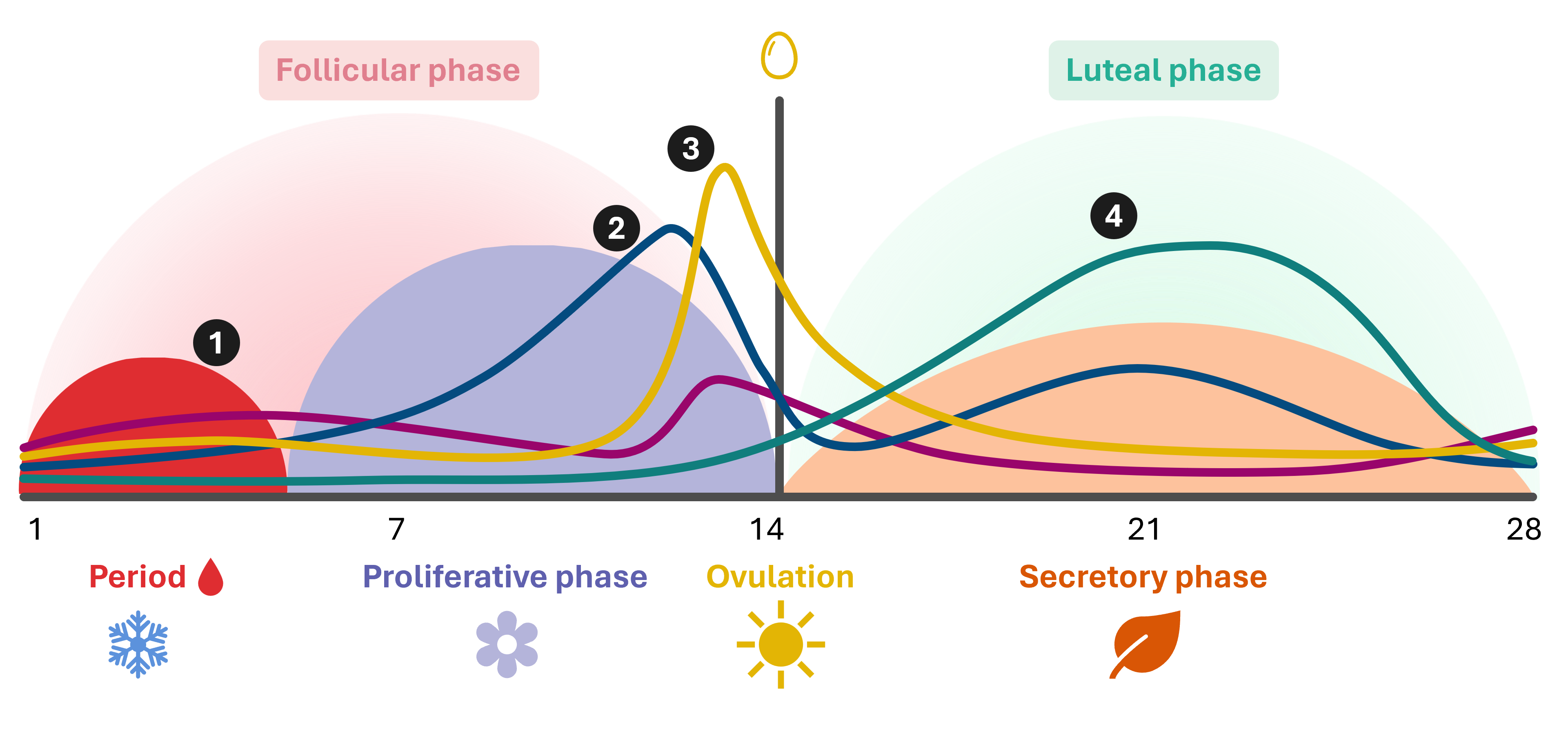
Click on the buttons to show specific changes during your cycle.
This is based off a typical 28-day cycle.

Click on the 4 phases to show specific changes or "Reset" to show all.
Hormones are chemical messengers produced by various glands in the endocrine system that regulate numerous functions in the body. They travel through the bloodstream to tissues and organs, where they influence processes such as growth, metabolism, reproduction, mood, and overall homeostasis. Out of over 50 hormones in our body, there are four hormones that are key during the menstrual cycle. Some other more known hormones are cortisol, thyroid and insulin.
The ovarian cycle and uterine cycle are two interconnected processes that occur during the menstrual cycle. This delicate system prepares the body for potential pregnancy.
The ovarian cycle is based on the changes in the ovaries and is mainly used determine the most fertile days to increase the chances of conceiving. The three phases are identified by the release of the egg, which are:
The uterine cycle describes the changes in the endrometrial lining of the uterus for potential implantation of a fertilized egg. It is divided into four phases:
The concept of "inner seasons" of the menstrual cycle is a metaphorical way to understand and relate to the different phases of the menstrual cycle, each associated with a season of the year. This framework helps in recognizing the cyclical nature of energy, emotions, and physical sensations throughout the menstrual cycle. Here is a summary of the inner seasons:
Understanding these inner seasons can help you align your activities and self-care practices with the natural rhythms of their menstrual cycle, fostering a deeper connection with your body and overall well-being.
Learn more about what to focus on in terms of your nutrition, exercise and work during each phase of your cycle on the biohacking page.